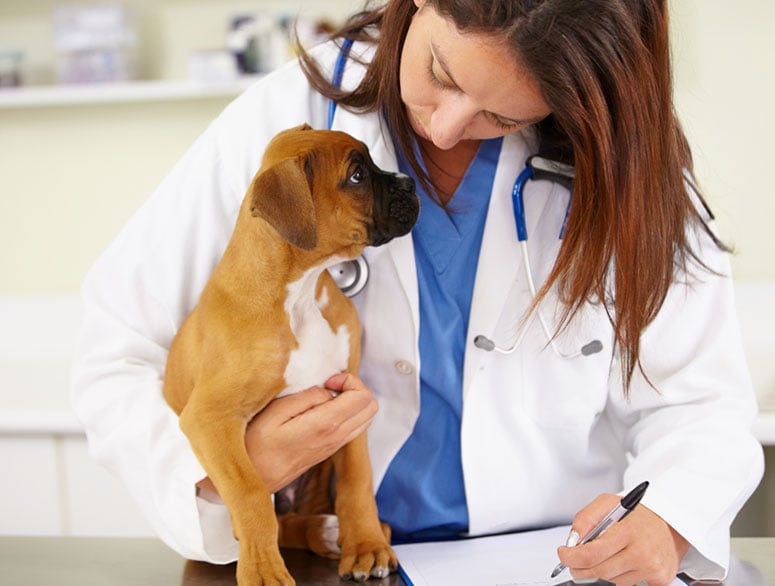Key Takeaways
- Parvovirus is a contagious disease that is common among puppies aged six weeks to six months.
- It is most commonly transmitted through feces.
- Symptoms include bloody diarrhea, vomiting, lethargy, and weight loss.
- Infected dogs should be quarantined for 10 days after a parvovirus diagnosis.
- There is a parvovirus vaccine that can help prevent this life-threatening disease.
Table of Contents
Once a new puppy has been adopted, their health should be a pet parent’s highest concern. Young dogs are especially susceptible to contracting infections due to their immune systems not being fully developed. One of the most severe and dangerous infectious agents a puppy can develop is parvovirus. If the condition progresses too far, parvovirus can result in death in young puppies, so it’s important to watch for the symptoms and get veterinary care as soon as possible.
Causes
The canine parvovirus, or CPV, is a highly contagious disease that occurs mainly in puppies between the ages of six weeks and six months. CPV can be transmitted through bites but is most commonly transmitted via feces. The virus can be tracked and spread via something as simple as feces-infected shoes but can also remain in soil for extended periods of time. Sometimes improperly given CPV vaccinations can infect dogs as well, but this is extremely uncommon.
Clinical Signs and Symptoms
Symptoms of parvovirus include:
- Bloody diarrhea
- Vomiting
- Abdominal tenderness
- Lethargy
- Anorexia/weight loss
- Fever or hypothermia
- More severe cases can progress to involve the cardiac system
Diagnosis and Treatment
If parvo is suspected, your veterinarian will first perform a SNAP parvo fecal antigen test. Often, a puppy with suspected parvovirus is not allowed in the hospital until the test is performed to prevent spread of the disease. After positive test results, your vet will perform a physical examination with bloodwork. They may take an ultrasound and radiograph of the abdominal area in complicated cases. For treatments, most pets will have to be hospitalized for at least 3-4 days to make sure their condition improves. Treatments include IV fluids, electrolyte support and nutrition therapy along with medications to relieve nausea, vomiting, and diarrhea.
Management
For several days after initial infection, your dog has a high chance of passing CPV on to other dogs. Infected dogs should be quarantined for 10 days after diagnosis to prevent spreading the disease, however in many cases, the dog would be hospitalized and receiving treatment during that time already. Bleach all surfaces your pet came into contact with – food and water bowls, toys, crate, etc. – as CPV can remain contagious for up to a month. After bleaching, make sure to soak the items in dish soap and water to prevent bleach contamination.
Preventing Parvovirus
Talk to your veterinarian about the parvovirus vaccine. Don’t allow unvaccinated or recently vaccinated puppies in an area such as dog parks that could potentially have infected feces or soil. Regularly clean your backyard of feces to prevent the spread of CPV. It’s extremely important to keep puppies’ environments clean to reduce the risk of them contracting life-threatening diseases. Practice safe and responsible socialization with your puppy for two weeks after a recent CPV vaccination – this means avoiding visiting dog parks or any areas where dogs infected with parvo could have visited.
Parvovirus is a serious illness that is most commonly found in young puppies. With the proper steps – vaccination, clean environment – you can keep your puppy safe.
The content is not intended to be a substitute for professional veterinarian advice, diagnosis, or treatment. Always seek the advice of your veterinarian or other qualified health provider with any questions you may have regarding a medical diagnosis, condition, or treatment options.









